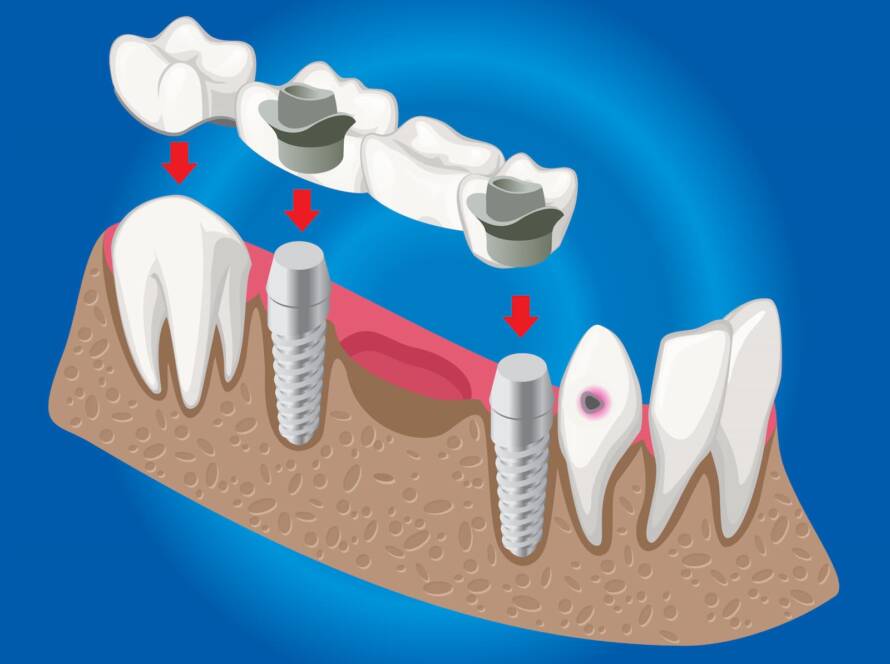Tongue cleaning is an often overlooked yet integral part of maintaining optimal oral hygiene. This practice involves the removal of food debris, dead cells, and bacteria from the surface of the tongue. A clean tongue can help in preventing oral issues such as bad breath, plaque buildup, and an unbalanced oral microbiome. As such, understanding how to effectively clean the tongue is essential for anyone aiming to achieve comprehensive oral health.
Importance of Tongue Cleaning
- Prevention of Bad Breath
- A primary benefit of tongue cleaning is the reduction of halitosis. The tongue’s surface harbors bacteria that can produce volatile sulfur compounds (VSCs), leading to bad breath.
- Reduction of Bacteria
- Regular cleaning helps in decreasing the overall amount of bacteria in the mouth, thus contributing to a healthier oral environment.
- Improvement of Taste Perception
- Removing debris from the tongue can enhance taste, providing a more accurate and enjoyable tasting experience.
Tools for Tongue Cleaning
- Tongue Scrapers: Specifically designed to clean the tongue effectively without causing harm. They come in various materials such as plastic, metal, and silicone.
- Toothbrushes: Certain toothbrushes feature a built-in tongue cleaner on the reverse side of the brush head. While not as effective as dedicated tongue scrapers, they can be useful for gentle cleaning.
- Specialized Gels and Rinses: These products can be used in conjunction with scrapers or brushes to help loosen debris and kill bacteria.
Step-by-Step Cleaning Process
- Preparation
- Start by rinsing the mouth with water to get rid of loose particles.
- Scraping
- Hold the scraper or toothbrush at the base of the tongue.
- Gently scrape from the back to the front. Repeat this process multiple times.
- Rinsing
- Rinse the scraper or brush after every pass to ensure no debris is reintroduced.
- After cleaning, rinse the mouth thoroughly with water or an antibacterial mouthwash.
Frequency of Cleaning
- It is recommended to clean the tongue at least once daily, preferably in the morning.
- If someone suffers from chronic bad breath or a medical condition that affects oral health, it may be beneficial to clean the tongue more frequently.
In summary, integrating tongue cleaning into the daily oral hygiene routine can significantly impact overall oral health positively. With the right tools and techniques, anyone can achieve a cleaner, healthier mouth.
Why Tongue Cleaning is Essential for Oral Health
Tongue cleaning is a fundamental aspect of oral hygiene that is often overlooked. A thorough tongue cleaning can significantly improve overall oral health by removing bacteria, food particles, and dead cells that accumulate on the tongue’s surface. This practice addresses several key areas essential for maintaining a healthy mouth.
Reduces Bacterial Load
The tongue harbors a large number of bacteria which can lead to various oral health issues if not removed regularly. Tongue cleaning helps:
- Minimize Bad Breath: One primary source of halitosis is the bacteria living on the tongue. Removing these bacteria can significantly freshen breath.
- Prevent Plaque Buildup: Bacteria from the tongue can transfer to teeth and contribute to plaque formation, leading to cavities and gum disease.
- Control Oral Infections: Regularly cleaning the tongue assists in reducing bacterial load, which in turn diminishes the risk of infections.
Enhances Taste Perception
A clean tongue can improve taste sensitivity. By removing the layers of buildup, the taste buds are more exposed, allowing individuals to enjoy and discern different flavors more effectively.
Supports Overall Health
Oral health is closely linked to overall health. Bacteria from the tongue can enter the bloodstream through tiny abrasions in the mouth, potentially leading to systemic health issues. Tongue cleaning can help:
- Reduce Risk of Respiratory Problems: Eliminating bacteria from the oral cavity can lower the risk of respiratory infections.
- Decrease Likelihood of Cardiovascular Diseases: Maintaining oral hygiene, including tongue cleaning, has been linked to a reduced risk of heart disease.
Promotes Aesthetics
A clean tongue contributes to a cleaner, healthier oral environment. This can enhance the appearance of the mouth, boost confidence, and ensure a more pleasant experience during social interactions.
Practical Considerations
Among the tools available for tongue cleaning are tongue scrapers and brushes. These tools are effective in:
- Removing surface debris with minimal effort.
- Being easy to use and readily available.
- Integrating seamlessly into daily oral hygiene routines.
Conclusion
Practicing regular tongue cleaning offers a multitude of benefits essential for maintaining optimal oral health. Through simple yet effective methods, individuals can ensure their oral and overall health remain in peak condition.
Different Methods of Tongue Cleaning
Effective tongue cleaning can be achieved through various methods, each offering different benefits. Choosing the optimal approach depends on individual preferences and oral health needs.
Tongue Scrapers
Tongue scrapers are specialized tools designed to remove bacteria and debris from the tongue’s surface.
- Metal Scrapers: Typically made from stainless steel or copper, metal scrapers provide durability and effective cleaning. They are easy to sterilize and can last a long time.
- Plastic Scrapers: These are more flexible and often feature grooves to aid in scraping. Plastic scrapers are usually more affordable and available in disposable varieties.
- Silicone Scrapers: Silicone options offer a softer touch, making them ideal for sensitive tongues. They are gentle yet effective in removing buildup.
Toothbrushes
A toothbrush used correctly can also aid in tongue cleaning.
- Regular Toothbrushes: Regular toothbrushes, when used gently, can help remove bacteria from the tongue. This method requires brushing the tongue back-to-front with the bristles.
- Tongue-Cleaning Toothbrushes: These brushes feature a dedicated surface on the back of the head designed explicitly for tongue cleaning. This surface often includes ridges or rubber bristles for effective scraping.
Tongue Cleaning Gels and Sprays
Adding a gel or spray specifically designed for tongue cleaning can enhance the effectiveness of any method.
- Antibacterial Gels: These gels contain ingredients that kill bacteria and freshen breath. They can be applied directly to the tongue before using a scraper or brush.
- Freshening Sprays: Sprays may be used before or after scraping to instantly refresh the mouth. They often contain essential oils like mint or eucalyptus.
Techniques for Optimal Cleaning
The method chosen should be executed with proper technique to maximize benefits.
- Starting from the Back: Begin cleaning near the back of the tongue and move forward. This approach helps remove buildup effectively.
- Gentle Pressure: Apply gentle, even pressure to avoid irritating the tongue. Over-scraping can lead to discomfort or injury.
- Consistency: Regular cleaning, ideally twice a day, ensures that bacteria and debris do not accumulate on the tongue.
Adopting one or a combination of these methods ensures thorough tongue cleaning, contributing significantly to overall oral hygiene.
Choosing the Right Tongue Cleaner
Selecting the appropriate tongue cleaner is paramount for effective tongue cleaning and optimal oral health. Various factors contribute to this decision, including material, design, and personal preference. Here are key considerations:
Material
- Stainless Steel
- Durable and long-lasting
- Easy to clean and sterilize
- Resists corrosion and does not harbor bacteria
- Plastic
- Lightweight and flexible
- Often includes a combination of scraper and brush
- May require frequent replacement
- Copper
- Naturally antibacterial properties
- Traditionally used in Ayurvedic practices
- Slightly malleable, enabling easy adaptation to the tongue’s contours
Design
- Single-Handed Scrapers
- Typically smaller and easier to maneuver
- Common in compact and travel-friendly models
- Double-Handed Scrapers
- Provide greater control and pressure
- Often favored for comprehensive cleaning
- Brush/Scraper Combinations
- Integrate brushing and scraping, catering to different cleaning preferences
- May enhance user comfort through varied techniques
Ergonomics
- Handle
- Should provide a comfortable, non-slip grip
- Consider designs with textured or cushioned handles for added comfort
- Scraper Shape
- Either U-shaped or straight edge
- U-shaped scrapers cover more surface area in a single stroke
- Straight edge scrapers allow precision in specific areas
Personal Preferences
- Sensitivity:
- Individuals with a sensitive tongue may prefer softer, flexible plastic scrapers
- Those requiring thorough cleaning might opt for stainless steel or copper
- Maintenance:
- Stainless steel and copper require regular sterilization
- Plastic may need frequent replacement, thus, environmental factors might influence choice
Additional Features
- Replaceable Heads:
- Extended lifespan through replaceable parts
- Eco-friendly options available in some brands
- Travel Cases:
- Convenient and hygienic storage
- Ideal for maintaining oral hygiene during travel
It’s essential to weigh these factors and choose a tongue cleaner that suits individual needs and preferences, ensuring both efficacy and comfort for routine oral hygiene.
Step by Step Guide to Using a Tongue Scraper
- Choose the Right Tongue Scraper
- Select a tongue scraper made from materials like stainless steel or plastic. Ensure the scraper has a shape and size suitable for your mouth.
- Rinse the Scraper
- Before use, thoroughly rinse the tongue scraper with warm water to ensure it is clean.
- Stick Out Your Tongue
- Extend your tongue as far out of your mouth as you comfortably can. This provides better access to the entire surface of your tongue.
- Place the Scraper at the Back of Your Tongue
- Gently place the tongue scraper at the back of your tongue. If you have a sensitive gag reflex, start a bit closer to the middle.
- Apply Gentle Pressure
- Using gentle to moderate pressure, drag the scraper from the back of the tongue to the tip. This motion should be smooth and continuous.
- Wipe Off Debris
- After each sweep, wipe the scraper with a tissue or rinse it under running water to remove the accumulated debris.
- Repeat if Necessary
- Repeat the scraping process 2-3 times, or until you no longer see a significant amount of debris being removed.
- Rinse Your Mouth
- After scraping, rinse your mouth with water or an antibacterial mouthwash to flush out the loosened bacteria and debris.
- Clean the Scraper
- Thoroughly rinse the tongue scraper with warm water, and if desired, use a bit of antibacterial soap. Dry it completely before storing.
- Incorporate Daily Use
- Incorporate tongue scraping into your daily oral hygiene routine—preferably in the morning and evening after brushing your teeth.
Best Practices for Using a Tongue Brush
Maintaining proper oral health is paramount, and using a tongue brush correctly can significantly contribute to overall hygiene. Adhering to best practices ensures maximum effectiveness and safety.
Selecting the Right Tongue Brush
- Brush Material: Choose a tongue brush with soft, non-abrasive bristles to avoid damaging the tongue’s delicate surface.
- Grip Design: Opt for a brush with an ergonomic handle for a secure grip, ensuring ease of use and control.
Preparation Before Use
- Rinse the Brush: Always rinse the tongue brush with warm water before each use to cleanse it of any contaminants.
- Apply Toothpaste or Mouthwash: For enhanced cleaning, apply a small amount of toothpaste or a few drops of mouthwash on the brush.
Effective Brushing Technique
- Gentle Pressure: Apply gentle pressure to the tongue to avoid irritation. Excessive force can cause soreness or injury.
- Starting Point: Begin at the back of the tongue and gradually move forward, ensuring each stroke clears debris effectively.
- Consistent Strokes: Use long, sweeping strokes from back to front. Repeat this motion across the entire surface of the tongue.
Frequency of Use
- Daily Routine: Incorporate tongue brushing into the daily oral hygiene regimen, ideally twice a day – once in the morning and once before bed.
- After Meals: Consider brushing the tongue after meals to remove food particles and prevent bacteria buildup.
Post-Brushing Care
- Rinse Thoroughly: After brushing, rinse the mouth and the brush thoroughly with water to remove loosened debris.
- Sanitize the Brush: Regularly sanitize the tongue brush by soaking it in antibacterial mouthwash or using a dedicated sanitizing solution.
Additional Tips
- Replace Regularly: Replace the tongue brush every three months, or sooner if the bristles show signs of wear.
- Monitor for Sensitivity: If discomfort or sensitivity occurs, reassess the brushing technique or consider changing the brush type.
Following these best practices can optimize the effectiveness of tongue cleaning, contributing to better oral health and fresher breath.
DIY Home Remedies for Tongue Cleaning
Maintaining optimal oral health involves regular tongue cleaning. Simple and effective DIY home remedies can be just as beneficial as commercial products. Below are various methods and ingredients that can aid in thorough tongue cleaning.
Natural Ingredients
- Saltwater Rinse: Mix half a teaspoon of salt in a glass of warm water. Rinse the mouth thoroughly, ensuring the solution reaches the tongue. Salt has natural antibacterial properties that can help cleanse the tongue.
- Turmeric Paste: Turmeric is known for its antimicrobial properties. Create a paste by mixing turmeric powder with water. Apply the paste to the tongue and scrub gently. Rinse thoroughly with water.
- Baking Soda: Create a paste by combining a teaspoon of baking soda with a few drops of water. Apply this paste to the tongue and brush gently. Baking soda neutralizes odors and helps in removing bacteria.
Herbal Solutions
- Aloe Vera Gel: Aloe Vera has anti-inflammatory and antibacterial properties. Apply fresh Aloe Vera gel on the tongue, leave it for a few minutes, and rinse off with warm water.
- Neem Leaves: Neem has strong antimicrobial characteristics. Chewing a few neem leaves or using a neem-based mouthwash can help cleanse the tongue effectively.
Homemade Tools
- Spoon Scraping: A metal spoon can be an effective tool for tongue scraping. Use the edge of a spoon to gently scrape the tongue from back to front. Rinse the spoon and mouth after each use.
- Toothbrush: For those without a tongue scraper, a soft-bristled toothbrush can be effective. Brush the tongue gently in a back-and-forth motion.
Essential Oils
- Peppermint Oil: Known for its cooling effect and antibacterial properties, add a few drops of peppermint oil to a glass of water. Use this solution as a mouth rinse.
- Tea Tree Oil: This essential oil has antifungal and antibacterial properties. Dilute a few drops in water and use as a mouth rinse or apply directly to the tongue using a cotton swab.
General Tips
- Hydration: Drinking plenty of water throughout the day helps in maintaining oral hygiene and can aid in naturally cleaning the tongue.
- Balanced Diet: Consuming a diet rich in fiber helps in mechanical cleaning of the tongue through the action of chewing and saliva production.
Incorporating these DIY remedies into daily oral hygiene routines can significantly improve tongue cleaning and contribute to overall oral health.
Potential Mistakes and How to Avoid Them
Proper tongue cleaning enhances oral hygiene, yet common mistakes can negate its benefits. Awareness and appropriate action are key.
Using the Wrong Tool
Using inappropriate tools, such as a toothbrush or sharp objects, can irritate the tongue surface.
- Avoid: Using toothbrushes, rough edges, or non-specific tongue cleaners.
- Solution: Opt for tongue scrapers or specifically designed tongue brushes, available at pharmacies.
Applying Excessive Pressure
Excessive force while cleaning can cause micro-tears and discomfort.
- Avoid: Pressing too hard while scraping.
- Solution: Apply gentle yet firm pressure. The cleaning should not be painful.
Inconsistent Cleaning Routine
Inconsistency diminishes the effectiveness of tongue cleaning, leading to plaque and bad breath.
- Avoid: Skipping tongue cleaning or doing it sporadically.
- Solution: Incorporate tongue cleaning into the daily oral hygiene regimen, ideally twice a day.
Neglecting the Posterior Section
Cleaning only the front part of the tongue leaves behind bacteria on the posterior section.
- Avoid: Focusing solely on the tongue’s tip.
- Solution: Ensure the entire surface, including the back, is thoroughly cleaned.
Ignoring Personal Hygiene
Using unclean tools or ignoring tool maintenance leads to bacterial growth.
- Avoid: Reusing dirty tongue cleaners and failure to sanitize them.
- Solution: Rinse the cleaner thoroughly after each use and allow it to dry. Replace the cleaner periodically.
Using Chemical Solutions
Some may use mouthwash or other chemicals inappropriately for tongue cleaning.
- Avoid: Employing chemicals or mouthwashes as primary cleaning agents.
- Solution: Stick to mechanical scraping. Use mouthwash as a supplement, not a substitute.
Overlooking Medical Conditions
Underlying conditions, such as ulcers or infections, can worsen with improper cleaning.
- Avoid: Ignoring pain or unusual symptoms.
- Solution: Consult a healthcare professional if discomfort persists or if there are signs of infection.
Wrong Technique and Pattern
Incorrect technique might miss significant bacteria and plaque.
- Avoid: Random or haphazard scraping directions.
- Solution: Employ a systematic approach. Start from the back and move forward in a gentle, sweeping motion.
Proper attention to these common pitfalls ensures the effectiveness of tongue cleaning, contributing to optimal oral health.
When and How Often Should You Clean Your Tongue
Regular tongue cleaning is crucial for maintaining optimal oral health. Incorporating tongue cleaning into a daily oral hygiene routine can significantly reduce the buildup of bacteria, leading to fresher breath and decreased risk of dental issues.
Daily Cleaning Schedule
- Morning Cleansing: Cleaning the tongue first thing in the morning is recommended. This helps eliminate the bacteria and debris that accumulate overnight.
- Evening Routine: A second cleaning before bed is beneficial. Removing leftover particles and bacteria prevents them from thriving overnight.
- Optimal Frequency: Most dental experts suggest cleaning the tongue at least twice a day. However, individuals with specific oral health concerns may require more frequent cleaning.
Method of Cleaning
- Tongue Scraper: A tongue scraper, which is specifically designed for this purpose, is considered the most effective tool. Place it at the back of the tongue and gently pull it forward, applying light pressure. Rinse the scraper after each pass.
- Toothbrush: For those without a tongue scraper, a toothbrush with soft bristles can be used. Brush gently from the back to the front of the tongue, ensuring to cover the entire surface.
- Mouth Rinse: Complementing mechanical cleaning with an antibacterial mouth rinse can enhance results. Swishing the rinse after scraping or brushing helps to remove any loosened debris and bacteria.
Additional Considerations
- Oral Health Conditions: Individuals with conditions such as xerostomia (dry mouth) or oral thrush may need to clean their tongue more frequently. Consulting a dental professional for personalized advice is recommended.
- Dietary Habits: Consuming foods with strong odors or certain textures may necessitate more frequent tongue cleaning. Sticky or sugary foods, in particular, can leave residues that benefit from immediate removal.
Regular and proper tongue cleaning plays a pivotal role in comprehensive oral hygiene. Following these guidelines ensures that individuals can maintain a healthier and fresher oral environment.
The Impact of Diet on Tongue Hygiene
Diet plays a crucial role in maintaining tongue hygiene, influencing both the appearance and health of the tongue. Foods and beverages consumed can directly affect the accumulation of debris, bacteria, and toxins on the tongue’s surface.
- High-sugar Diets:
- High sugar intake fosters an environment where bacteria thrive.
- This can lead to increased plaque formation and a higher risk of developing a coated tongue.
- Dairy Products:
- Dairy, especially cheese and milk, can produce mucous deposits.
- This can contribute to a white coating on the tongue if not cleaned properly.
- Spicy and Acidic Foods:
- These can irritate the tongue, leading to inflammation.
- Excessive consumption may cause redness and sensitivity, complicating effective tongue cleaning.
- Vegetables and Fiber-rich Foods:
- Vegetables like carrots and celery act as natural cleaners.
- Fiber-rich foods facilitate saliva production, aiding in the natural cleansing of the tongue and oral cavity.
Hydration and Its Effect
Hydration is pivotal for maintaining an optimal environment in the oral cavity:
- Water Intake:
- Adequate water consumption aids in flushing away food particles and bacteria.
- Hydration supports natural saliva production, which is essential for washing away debris from the tongue surface.
- Alcohol and Caffeine:
- These can lead to dry mouth conditions, reducing saliva flow.
- A dry mouth environment is more susceptible to bacterial growth and tongue coatings.
Food Temperature
The temperature of consumed food can also influence tongue hygiene:
- Hot Foods and Beverages:
- Consuming extremely hot items can damage taste buds and the tongue’s surface.
- This damage can provide niches for bacteria to harbor, complicating the cleaning process.
- Cold Foods and Beverages:
- Conversely, excessively cold foods do not pose a significant direct threat.
- However, they can affect general oral sensitivity, sometimes leading to reduced effectiveness in maintaining oral hygiene practices.
Role of Probiotics
Probiotics have a beneficial effect on maintaining oral health:
- Yogurt and Fermented Foods:
- Probiotics help maintain a balanced oral microbiome.
- They can reduce the presence of harmful bacteria on the tongue, facilitating easier maintenance of tongue hygiene.
Recommendations
To optimize tongue hygiene through diet:
- Balanced Diet: Emphasize a diet rich in vegetables, fruits, and whole grains.
- Hydration: Encourage regular water consumption while limiting alcohol and caffeine.
- Moderation: Intake dairy products and sugar in moderation.
- Probiotics: Integrate probiotic-rich foods into the diet for overall oral health benefits.
Diet is an integral component of tongue hygiene, affecting bacterial growth, debris accumulation, and overall tongue health.
Scientific Studies and Findings on Tongue Cleaning
Research into the benefits of tongue cleaning has been ongoing for decades. The studies outlined below highlight the positive impacts of tongue hygiene on overall oral health.
Reduction in Halitosis
Several studies have demonstrated that tongue cleaning can significantly reduce halitosis (bad breath):
- A study published in the Journal of Clinical Dentistry found that daily tongue cleaning reduced volatile sulfur compounds (VSCs), the primary cause of bad breath, by up to 75%.
- Research in the International Journal of Dental Hygiene showed that participants who practiced tongue cleaning exhibited lower levels of halitosis compared to those who did not.
Improvement in Taste Sensation
Separate studies have indicated that tongue cleaning can enhance taste perception:
- According to findings in the Journal of Periodontology, individuals who cleaned their tongues daily reported an improved ability to distinguish between different tastes.
- An experiment in the Journal of Texture Studies demonstrated that regular tongue cleaning can increase taste sensitivity by removing debris and dead cells that mask taste receptors.
Prevention of Oral Diseases
Research also supports the role of tongue cleaning in preventing oral diseases:
- The Journal of Dental Research published a study suggesting that regular tongue cleaning reduces the risk of periodontal diseases by decreasing plaque levels and harmful bacteria in the mouth.
- Another study in the Archives of Oral Biology found that tongue cleaning can reduce the incidence of oral thrush and other fungal infections by maintaining a balanced oral microflora.
Clinical Recommendations
Professionals have incorporated these findings into clinical practice:
- The American Dental Association (ADA) recommends tongue cleaning as part of a comprehensive oral hygiene routine, advocating its efficacy in maintaining oral health.
- Guidelines from the American Academy of Periodontology also underscore the importance of tongue care in preventing gum disease and other oral conditions.
Overall, these scientific studies underscore the importance of tongue cleaning for maintaining optimal oral health, supporting its widespread recommendation by dental health professionals.
Integrating Tongue Cleaning into Your Daily Routine
Incorporating tongue cleaning into daily oral care requires minimal effort and reaps significant benefits for oral health. By adhering to a consistent regimen, individuals can effectively reduce bacteria buildup and maintain fresh breath.
Step-by-Step Guide
- Choose the Right Tool:
- Tongue Scraper: Metal or plastic tools designed specifically for tongue cleaning.
- Toothbrush: A soft-bristled toothbrush can be used if a tongue scraper is unavailable.
- Preparation:
- Conduct tongue cleaning after brushing and flossing.
- Use a clean tongue scraper or toothbrush.
- Proper Technique:
- Extend the tongue out of the mouth.
- Place the tongue scraper or toothbrush at the back of the tongue.
- Apply gentle pressure and pull the tool forward.
- Rinse the tool thoroughly after each pass.
- Repeat this process 2-3 times or until the tongue surface appears clean.
- Rinsing:
- Rinse the mouth with water or an antibacterial mouthwash.
- Ensure the tongue scraper or toothbrush is properly cleaned and dried after use.
Tips for Consistency
- Set Reminders:
- Use calendar alerts or smartphone reminders to make tongue cleaning a habit.
- Incorporate into Morning Routine:
- Clean the tongue immediately after brushing and flossing in the morning.
- Make Evening Rituals:
- Repeat tongue cleaning before bedtime to remove daily buildup.
Selecting Tongue Cleaning Tools
Consider the following when choosing tongue cleaning tools:
- Material: Opt for rust-resistant and hygienic materials like stainless steel or BPA-free plastic.
- Design: Look for ergonomic designs that are easy to use and clean.
Addressing Common Concerns
- Gag Reflex:
- Start with the tongue scraper placed closer to the front and gradually move towards the back.
- Sensitivity:
- Use gentle pressure and ensure the tool edges are smooth to avoid irritation.
- Hygiene:
- Regularly sanitize the tongue cleaning tools.
Benefits of Regular Tongue Cleaning
- Prevents Bad Breath:
- Reduces the bacterial load that contributes to halitosis.
- Improves Taste Sensation:
- Clears residue from taste buds, enhancing taste perception.
- Enhances Overall Oral Hygiene:
- Complements brushing and flossing by targeting areas they might miss.
Benefits of Regular Tongue Cleaning
One of the key advantages of maintaining regular tongue cleaning lies in its comprehensive benefits for oral health:
- Reduction of Bad Breath: Consistent tongue cleaning helps remove bacteria and food particles that contribute to halitosis. This practice effectively minimizes bad breath and always ensures fresher breath.
- Improved Taste Sensation: Regularly cleaning the tongue can unclog the taste buds, enhancing one’s ability to enjoy food flavors fully. This process removes the coating that can dull the taste buds’ effectiveness.
- Lower Risk of Oral Infections: The removal of bacteria from the tongue helps prevent oral infections such as gum disease and oral thrush. It reduces bacterial load, thereby promoting a healthier oral environment.
- Enhanced Appearance of Tongue: A clean tongue has a healthier appearance. Regular removal of debris prevents the tongue from looking discolored or coated, contributing to overall aesthetic oral hygiene.
- Better Digestive Health: Tongue cleaning stimulates saliva production, which can aid in digestion. Saliva is essential for breaking down foods and maintaining a balanced pH in the mouth and digestive tract.
- Holistic Oral Health Maintenance: Consistent tongue cleaning plays a significant role in comprehensive oral hygiene. It complements brushing and flossing to provide a thorough approach to oral care.
Enthusiasts of regular tongue cleaning often cite remarkable improvements in their oral health and overall well-being. Incorporating this practice into daily oral hygiene routines is strongly encouraged by dental health professionals.
Frequently Asked Questions (FAQs) on Tongue Cleaning
What is tongue cleaning?
Tongue cleaning is the practice of removing debris, bacteria, and dead cells from the surface of the tongue. This process can be done using a tongue scraper or a toothbrush.
Why is tongue cleaning important?
Tongue cleaning is crucial for maintaining optimal oral health. It helps to:
- Reduce bad breath.
- Remove bacteria and toxins.
- Improve taste sensation.
- Prevent oral infections and diseases.
How often should one clean their tongue?
It is recommended to clean the tongue at least once a day, preferably in the morning before eating or drinking. Consistent daily cleaning ensures the removal of overnight bacterial buildup.
Are there any tools needed for tongue cleaning?
Yes, tongue cleaning can be done using:
- Tongue Scraper: Specifically designed to clean the tongue effectively.
- Toothbrush: A toothbrush with soft bristles can be used if a scraper is unavailable.
Can tongue cleaning cause any harm?
When done gently, tongue cleaning is safe. Using excessive force can cause irritation or small cuts. It is essential to apply gentle pressure to avoid any damage.
What if the person has a sensitive gag reflex?
For individuals with a sensitive gag reflex, it is advisable to:
- Start at the tip of the tongue and gradually move backward.
- Breathe through the nose to help minimize the gag reflex.
How long does it take to see results?
Most people notice an improvement in breath freshness and taste sensation immediately. Consistent tongue cleaning over time will provide prolonged benefits to oral health.
Can children perform tongue cleaning?
Yes, children can and should clean their tongues. However, supervision may be necessary to ensure they use gentle pressure and proper techniques.
Are there any signs that tongue cleaning is necessary?
Common signs that indicate the need for tongue cleaning include:
- Persistent bad breath.
- Visible coating on the tongue.
- Altered taste sensation.
What type of tongue scraper is the best?
Stainless steel and plastic tongue scrapers are both effective. The choice depends on personal preference. Stainless steel scrapers are durable and easy to clean, while plastic scrapers are gentler for those with sensitive tongues.
How should a tongue scraper be cleaned?
After each use, rinse the tongue scraper thoroughly with warm water. Periodically, it can be soaked in a solution of water and antibacterial mouthwash to ensure it remains hygienic.
Conclusion and Final Thoughts
Maintaining proper tongue hygiene is essential for overall oral health. Regular cleaning of the tongue can lead to multiple benefits, including fresher breath, reduced plaque formation, and improved taste perception. Utilizing techniques recommended by dental professionals can make a significant difference in the effectiveness of tongue cleaning practices. Below are the key pillars of optimal tongue cleaning:
- Choosing the Right Tool:
- Tongue Scraper: Available in various materials, including metal and plastic, a tongue scraper effectively removes debris.
- Toothbrush: Some toothbrushes come with specialized tongue-cleaning pads on the reverse side.
- Mouthwash: Using an antimicrobial mouthwash can complement mechanical cleaning methods.
- Proper Technique:
- Scraping Motion: Start from the back of the tongue and move forward, applying gentle pressure.
- Repetition: Perform multiple strokes to ensure thorough cleaning.
- Rinsing: After each stroke, rinse the tongue scraper or toothbrush to remove collected residues.
- Frequency:
- Routine: Incorporate tongue cleaning into the daily oral hygiene routine, ideally twice a day—once in the morning and once before bed.
- Consistency: Regular practice is crucial for long-term benefits.
- Additional Tips:
- Hydration: Stay hydrated to help maintain optimal saliva production, which aids in natural cleansing.
- Diet: Avoid excessive consumption of sugary and acidic foods that can contribute to plaque buildup.
By adhering to these practices, individuals can achieve and maintain a higher level of oral health. Dental professionals emphasize that proper tongue cleaning should be regarded as an integral part of daily oral hygiene, complementing brushing and flossing. How one chooses to clean their tongue can significantly impact their overall dental health, reducing the risk of oral diseases and improving their quality of life.
Through consistent and correct practices in tongue cleaning, individuals can ensure their mouths remain healthy and fresh. By following expert recommendations, anyone can achieve optimal oral health and experience the benefits of a cleaner, healthier tongue.














